22 Nov 2023 – Borders Amateurs’ Secret Contribution to Bletchley Park – Bruce McCartney GM4BDJ & John Struthers GM8CVN.
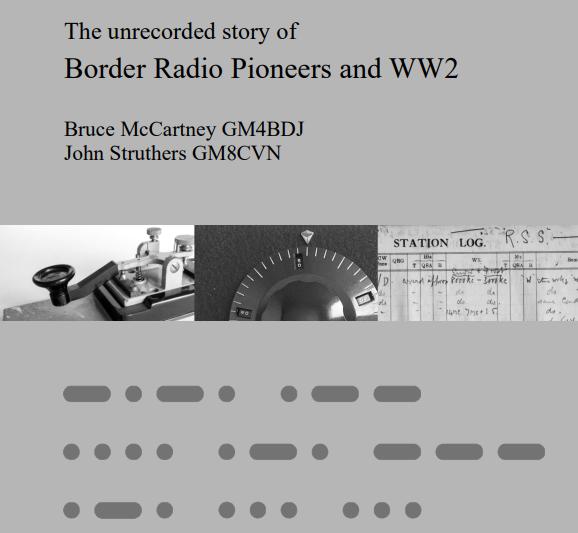
There was an excellent turnout of 21 for this very interesting talk by Bruce McCartney GM4BDJ via Zoom from Langholm, with John Struthers GM8CVN present at the LRS meeting at the BHH.
Bletchley Park’s WWII activities have been much written about since material became declassified, but the operation was far more pervasive than many realise, like the radio amateurs who spent the war as SWLs. The material collected was sent to BP, or destroyed for security reasons.
Bruce, assisted by John, has used material, recently come to light, which should have been destroyed, from wartime SWLs in the Borders who were listening for the state, not for pleasure. From this evidence they have written the story of the Borderers’ contribution.
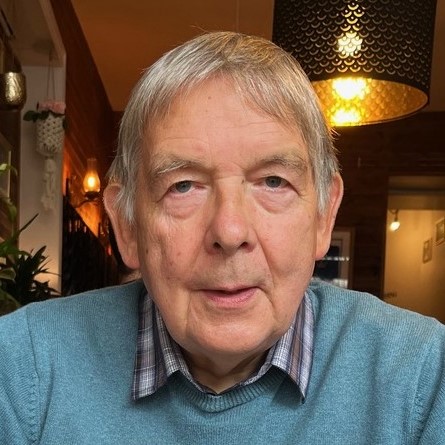
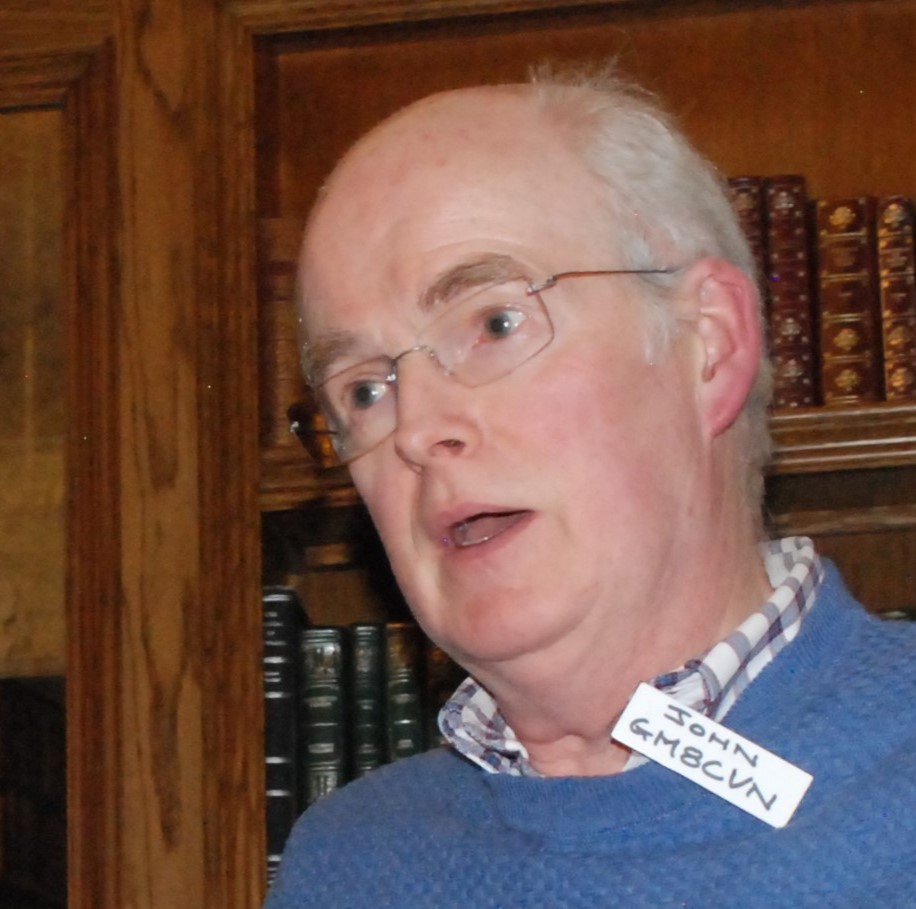
Bruce GM4BDJ John GM8CVN (at the LRS meeting)
This talk is based upon the book “The unrecorded story of Border Radio Pioneers and WW2” (click)
See also the website of the Borders Radio Pioneers (click)
=================================================================
APOLOGY – PLEASE NOTE SOME SLIDES AND SOME CAPTIONS ARE NOT AVAILABLE.

The title of this talk – Borders Amateurs Secret Contribution to Bletchley Park – was not easy. I had had several thoughts, perhaps “the Kelso train took me to Bletchley” or “Coincidences do Happen”!
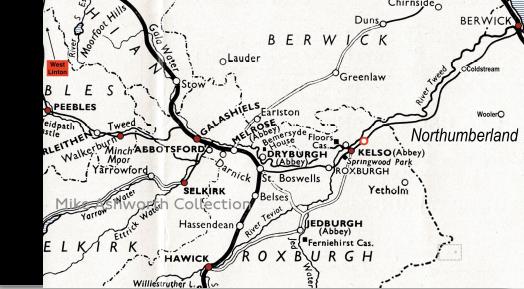
At the risk of insulting members, this is a map with some of the places mentioned coloured in red dots
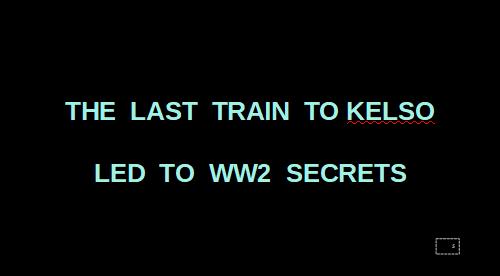
Although I’ll be doing the talking, I’ll introduce John Struthers GM8CVN who has been a source of information and leads – and a steadying influence. I think John’s search engine is supercharged and this talk would be much shallower without the notes and snippets he uncovered. John is responsible for an extensive spreadsheet of border amateurs which keeps on growing.
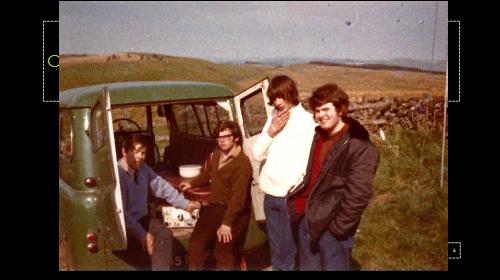
I have known John for a long time as this photo from the early 1970s shows!
L: Bruce; C: 2 student friends; R: John.
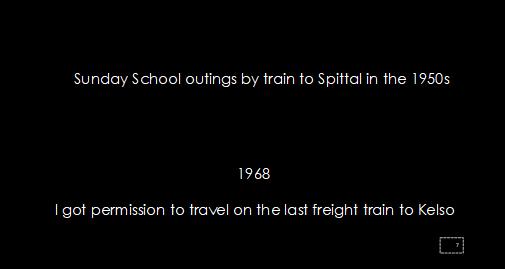
I won’t bore you all the reasons why I’m interested in the branch line – but just suffice to say that my Sunday School excursions from Hawick went to Berwick. Conjure up imagines non-corridor carriages, lemonade and ice-cream at Berwick and a two-hour journey to Hawick.
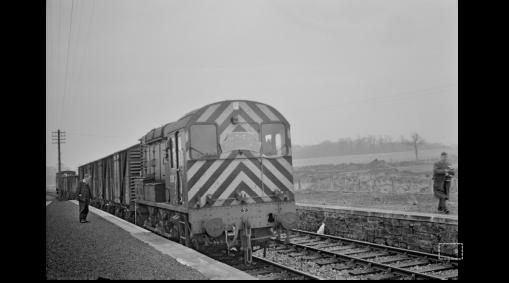
Kelso – as Dr Beeching’s Report meant the disappearance of railways from the Borders, I took some photographs and with the imminent closure of the last branch line, from St Boswells to Kelso, obtained permission from BR to travel in the Guard’s van of the final freight. I had expected to see several folk paying their last respects but only one gent turned up: he’d two cine cameras and told me that he worked in the foundry just next to the station. A humble diesel shunter in charge of the final train. One person in attendance with two cine camera.
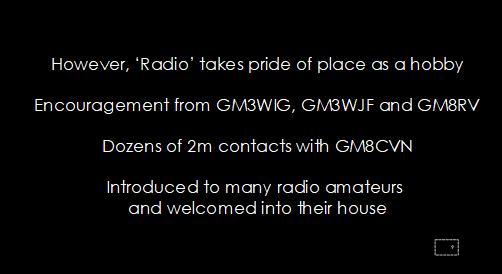
Although I regularly met in person or spoke to GM8RV, G6UC and G8SG, I never sat down one day and thought “I wonder what the old time radio amateurs did during WW2”. One of my mentors George Shankey GM3WIG used to recall tales and antics of amateurs to me when I was a shortwave listener but only one about WW2.

Not long after getting my licence, I had a contact with Alex Handyside. GM3CJN. He invited me to his house in Selkirk around 1973, where he disclosed that he had been listening to morse and had to post off records of what he had heard. He said, and to this day, I can quote him verbatim “in all these years, I’d only one message in the clear and that was for a thousand tennis racquets”. It wasn’t my place to ask more!
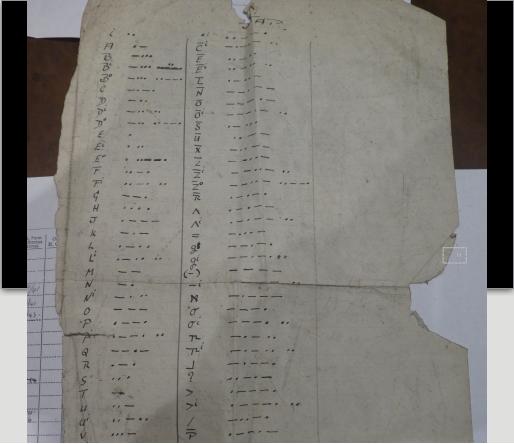
Alex told me he had to learn Japanese Morse. But I’ll put this meeting on the back burner for a while – 48 years to be precise!
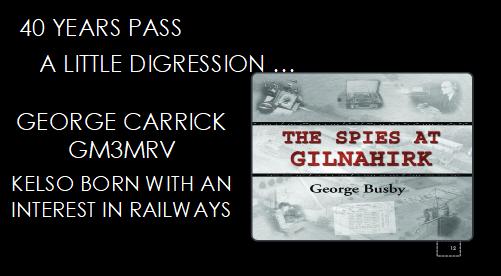
George was from Kelso and also had an interest in railways. He’d not long finished reading “The Spies of Gilnahirk” authored by George Busby. The book concerned the “Y” station in Northern Ireland.
George Busby’s book is an interesting read and for the first time I saw the term “Voluntary Interceptor” – amateurs who during the war listened to German morse.
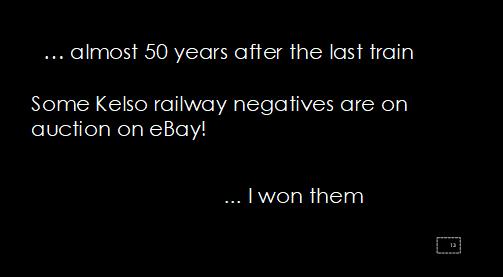
Forty years and more pass … In 2015, there was an auction on ebay for negatives of the Kelso railway. I won the auction and discovering that the vendor lived in St Boswells, I went to collect the negatives. On entering the path to his house, he opened the door and exclaimed, “you taught me at PHS!” An hour passed catching up on PHS news … I had taught his wife as well … and as I made a move to leave, he handed me the box with the negatives which lay on top of a sports bag and said, “you may as well take the ciné film.” There were 24 reels!
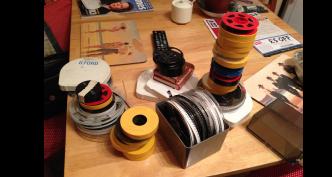
Back home, I scrounged a hand wound 8mm and Super 8 viewer and went through the 24 reels. 21 were family related.
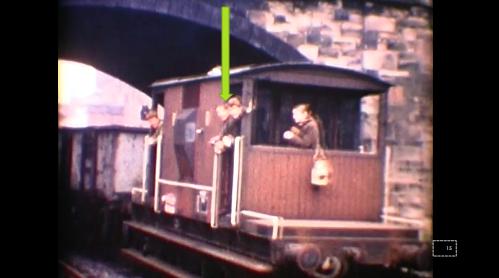
Three of the reels were railway – but there was the last freight train to Kelso shot both in B&W and colour and there was me in the guard’s van!
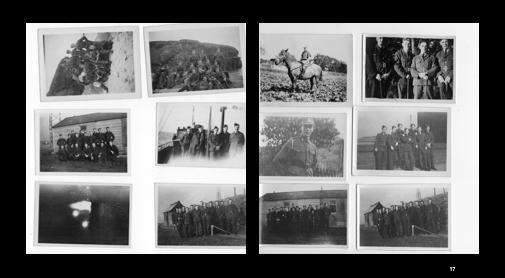
Knowing that the photographer worked at Henderson’s Foundry in Kelso, a retired policeman friend produced the name of his niece who in turn organized her brother to meet me. We got on great. Nephew David and I had many friends in common. I asked of there were any more photos taken by his uncle. There were!
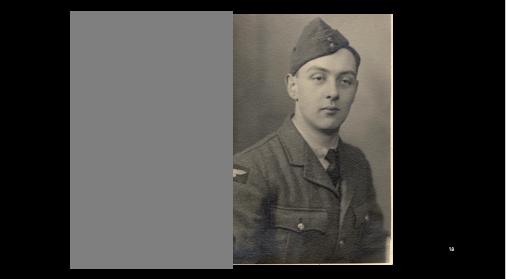
An email to a retired policeman produced the photographer’s name, David Welsh. Not only that but a famed photo of him in RAF uniform revealed, once the frame had been removed, underneath opened a photo of him in Merchant Navy uniform.
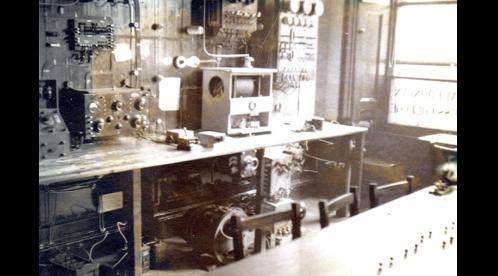
Caledonian Wireless College, 22 Walker Street, Edinburgh. Closed June 1948.
Alan Masson : Very little information has been found about this college, apart from the fact that it provided wireless telegraph training and that Sir James Redmond, Director of Engineering for the BBC 1968-79, studied there early in his career. The company owning the college was closed in June 1948 according to an entry in the Edinburgh Gazette. (Photo from LRS website).
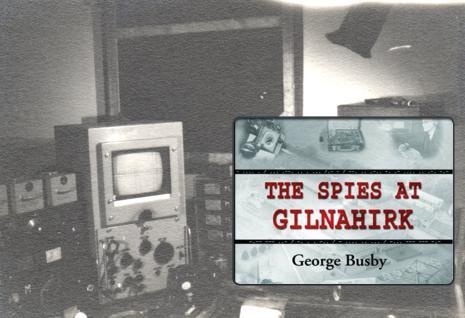
I approached the author of “The Spies at Gilnahirk” who was happy to send the scan on to someone at GCHQ who had helped him. Back came the reply “He should not have taken this photo” nothing else! I have submitted the photo with the HROs to several organisations but never got a definitive answer as to the ‘screen’ in the centre.
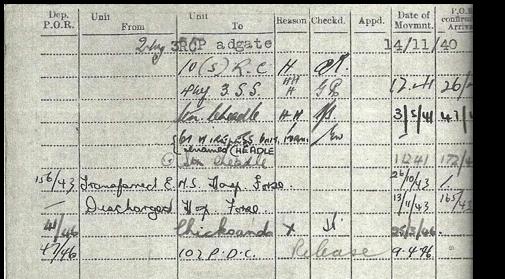
His nephew received his WW2 record.
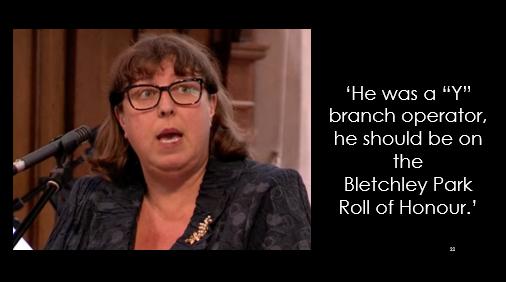
Back to David Welsh
With the nephews’ permission, I forwarded the record to Dr Helen Fry authoress of several Bletchley Park related books. Back came the reply: He was in the “y” service” and should be on the Bletchley Park Role of Honour”! This was the first time I had heard of Bletchley Park gathering and recording Bletchley veterans. Chicksands and Cheadle were both Y stations and training stations for wireless operators
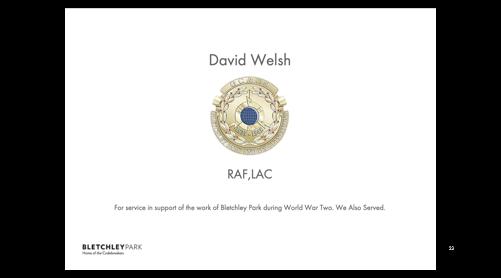
And that, I thought,was the end of David Welsh’s story
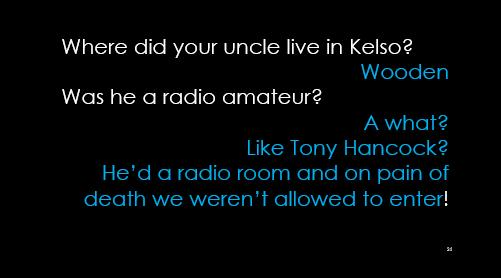
And there the matter rested until I asked. I see his address in Wooden, Kelso; where is his house? “Oh, it was a cottage outside Kelso on the Sprouston Road”. At this point the hairs on the back of my neck rose.
Several times, as George took me to the Berwick club, we’d look at the wires and George would say “I’m sure there must be an amateur there”.
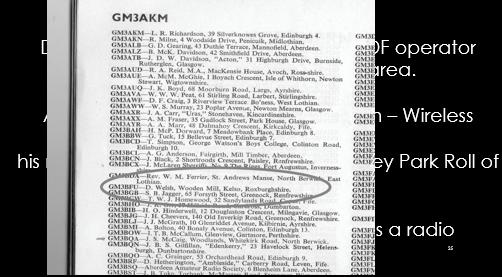
Post WW2 – what did he do?
Amateur Radio – a fine cover for all the aerials!
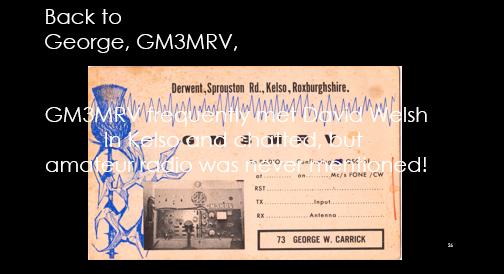
George was from Kelso and also had an interest in railways. George knew David Welsh and passed the time of day with him when they met in Kelso. Although both were amateurs, radio was never mentioned.
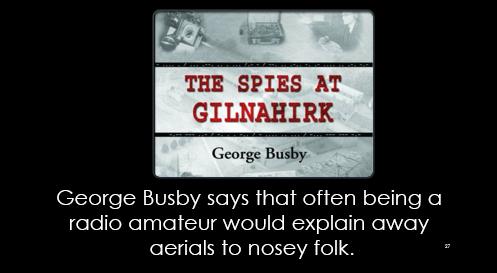
I phoned George Carrick in Gretna and asked if he knew David Welsh was a radio amateur. He was surprised “I often passed the time of day with him in Kelso, but never was radio mentioned”.
I had had several photocalls from George Busby about post WW2 Y station operators and George said that sometimes cover would be a radio amateur which would provide the excuse if anyone was nosey enough to ask why so many aerials.
And there in 2017, the matter rested, David Welsh was GM3BFU and had kept his callsign active until the 1970s.
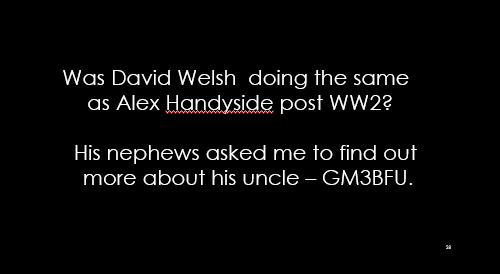
By this time, the nephews were intrigued!
He didn’t show his nephews!
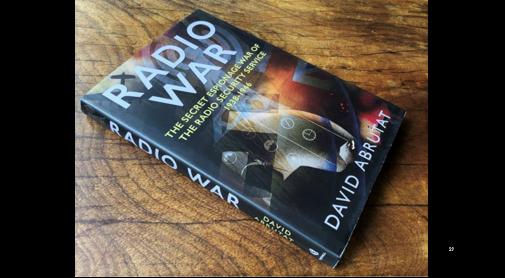
By 2019, David Abrutat’s book: Radio Wars had been published. This gives an insight into Y operators. He mentions that promising students from (amongst others) the Caledonian Wireless College in Edinburgh were cherry-picked. David Welsh had attended there! Could David Welsh have been one of these?
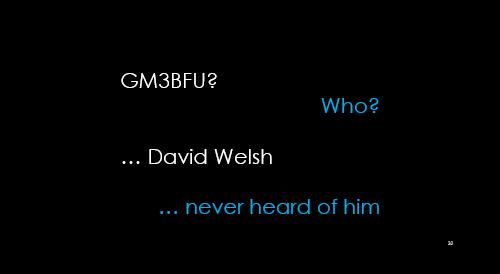
The network of radio amateurs in the Borders was very close – virtually everyone would know something about other radio amateurs. I contacted several old timers who may have worked him, but none ever had heard him or even heard of him.
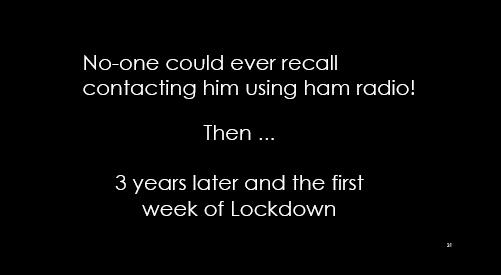
Then on the first week of the Covid Lockdown, there was a thump as a heavy envelope landed on the door step. On opening the envelope, there was a note “you may find the man you are after in this -it’s old Bob Harkness’s logbook. That was true, but bizarrely it started in 1936, and these entries had been made by John Blair, GM5FT.
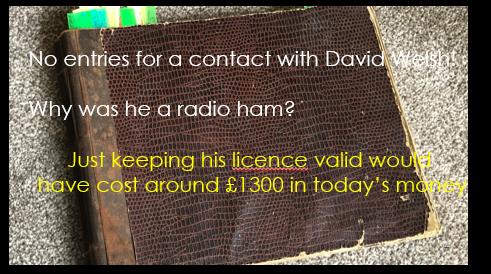
It’s old Bob Harkness’s logbook. Bob Harkness GM3PSJ had taken over John Blair’s logbook on John Blair’s death. This in itself is something I have never come across
Starting in 1936, John Blair was G5FT: Scottish amateurs only became GM in 1936 – it was like reading Scottish Amateur radio history!
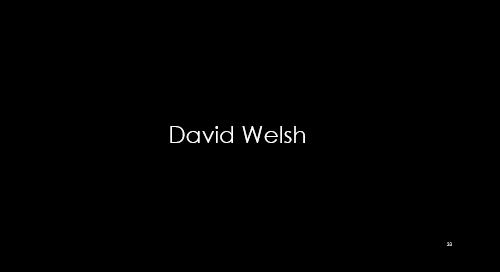
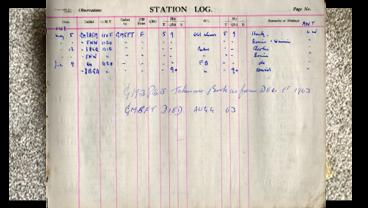
However, it was turning to this page – this is the war page – that the the logbook really began to be exciting.
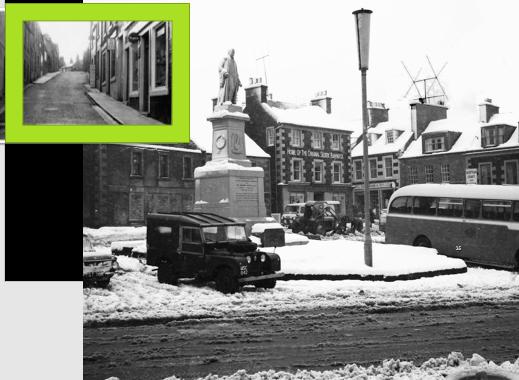
All I knew about John Blair was that his aerial went down a chimney and he rotated the aerial from the fireplace .
(See cubical quad in top-RHS).

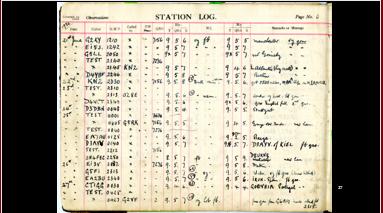
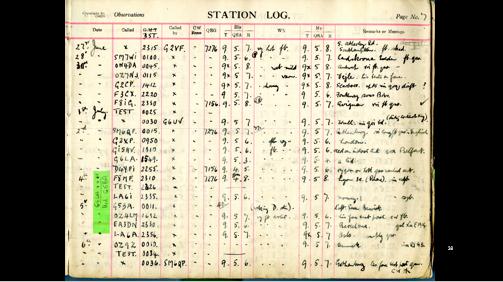
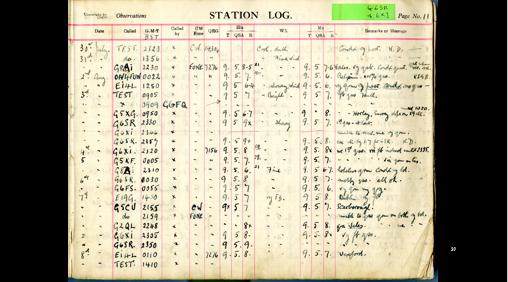
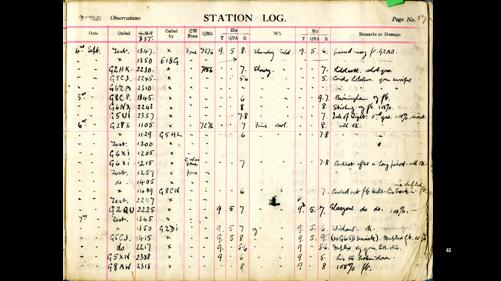
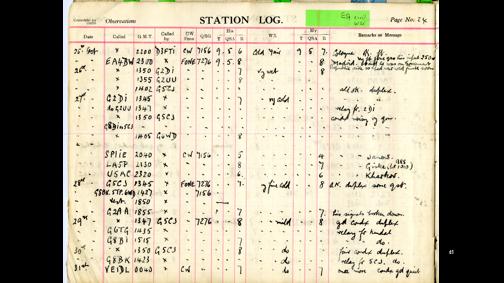
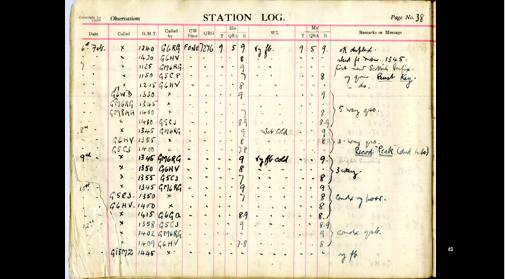
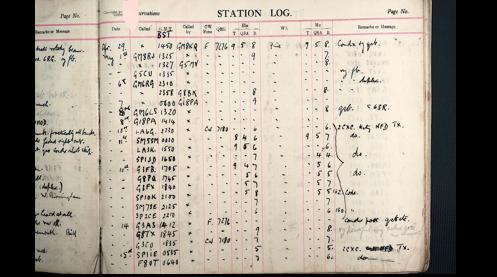
First day of GM
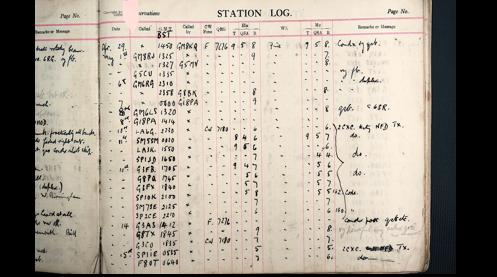
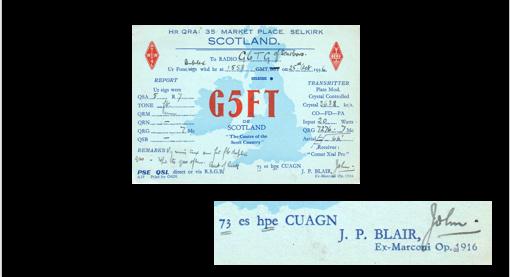
In 1937, there is Slow Morse practice with BRS 2789, 2ASV, 2CCA, BRSs 2280, 2663. Research revealed that BRS 2789: W McMahon – later GM3CV (post WW2 is active in Hawick) 2ASV: RS Wood – later GM8NW then in Galashiels (he uses GM6RG’s amateur station in 1939, while GM6RG is in USA) 2CCA; Walter Vinicombe GM8RV of Galashiels BRS 2280 Tom Purves 2CGY, Selkirk (GM2CGY post war in Ayton) BRS 2663 DS Bruce – later GM3NI of Galashiels (very little known about him) John Blair notes ‘Morse test’
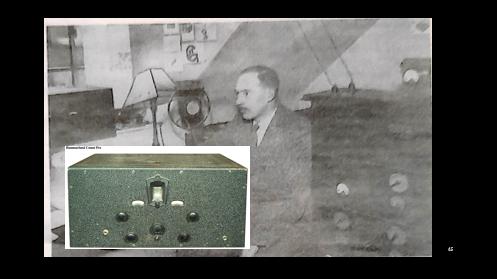
Hammerlund Comet Pro – $88 in 1932.
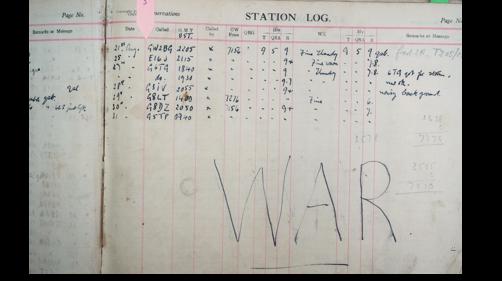
With the start of the war, all amateurs had to close down and their transmitting equipment was confiscated and put into storage by GPO officials.
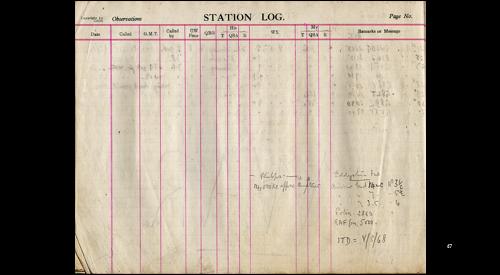
Police? RAF? 3TD
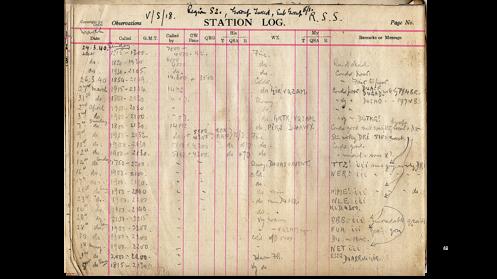

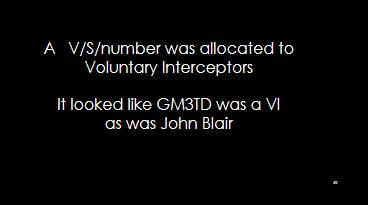
The VIs were mostly working men of non-military age, working in their own time and using their own equipment. Their transmitters had been impounded on the outbreak of war, but their receivers were not. They were ordered to ignore commercial and military traffic, to concentrate on more elusive transmissions. Each VI was given a minimum number of intercepts to make each month. Reaching that number gave them exemption from other duties, such as fire watching. Lockdown – who to ask!
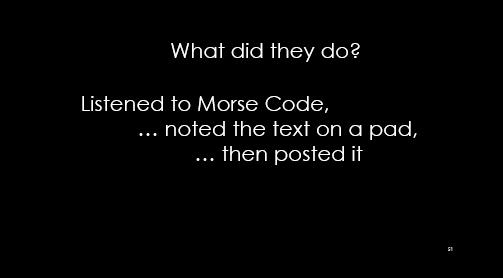
I must go back to the set again, for the time has come to seek
In the noise and interference for my allocated squeak
And all I ask is a steady note, through the ether speeding
At a fair strength, in a quiet spot, at a nice speed for reading.
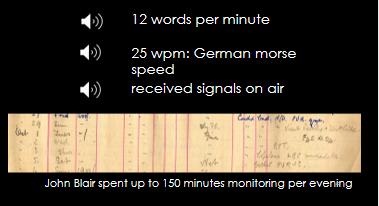
The British speed for Morse Code was 12 words per minute but the Germans used more than double – 25 wpm.
Bruce played recordings of both speeds.
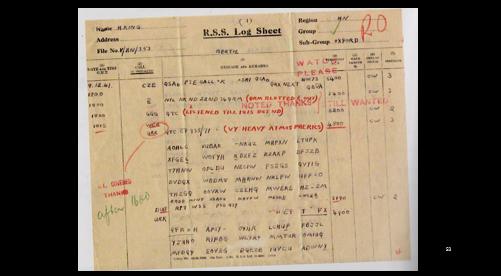
An R.S.S. log sheet, to be posted to an address in London (for onward forwarding to Bletchley Park).

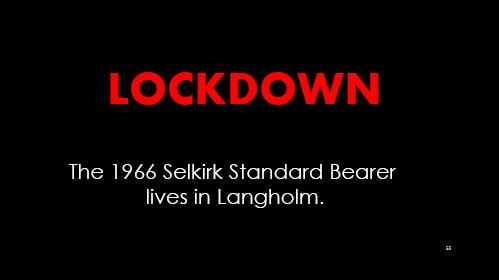
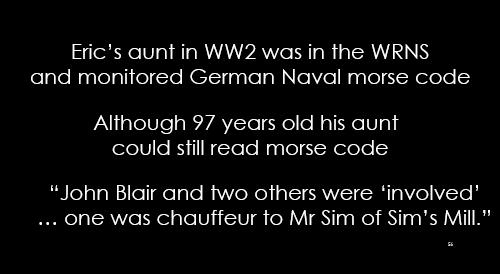
Eric paused and …. “That’s what my aunt did during the war. She’s in her 90s now and can still read Morse”.
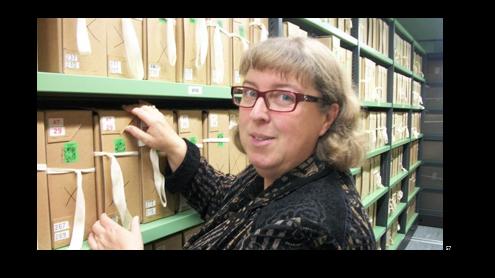
Dr Fry interviewed Eric’s aunt. She wrote her war-time story.
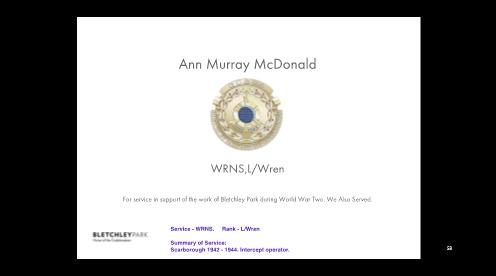
Bletchley medal.
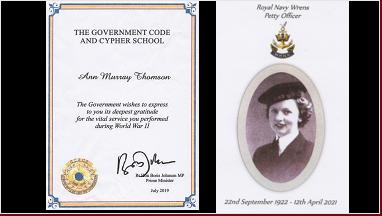
P.M. Boris Johnsons citation.

One “Y” and two VI operators were ‘found’ but was there another – Eric’s Aunt had mentioned two other folk as well as Blair. Could it have been Alex Handyside?
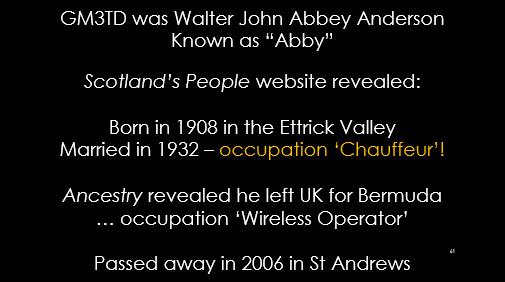
RSGB T&R Bulletin: May 1941, writing from Gibraltar, G3FT reports having met G2RQ and GM3TD both of whom were in the CSWS. (Civilian Shore Wireless Service). Later, the RSGB T&R Bulletin also reports: Jan 1943: GM3TD is enjoying himself in ZB2 [Gibraltar] where fruit is plentiful and whisky 10/- a bottle. He has been to several bullfights and fiestas in EA [Spain} Aug 1943: GM3TD in Gib toured Algeceras, Cueta, Tetua & Tangiers; returning on a Spanish boat to Gib. Nothing more until Ancestry reports him going in June 1946 to Bermuda listed as a “Civil Servant”, his address listed as Cupar, Fife and on another page as “Wireless Operator”.
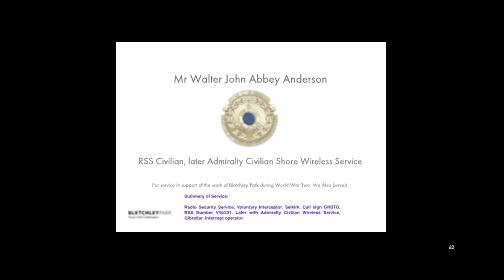
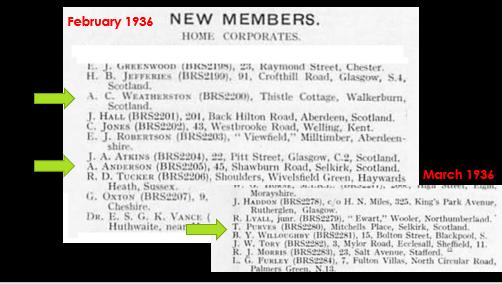
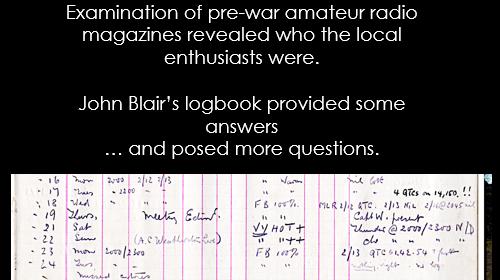
John and I went through prewar issues of the Radio Society of Great Britain’ s magazine (“T&R Bulletin”) and the Short Wave Magazine.
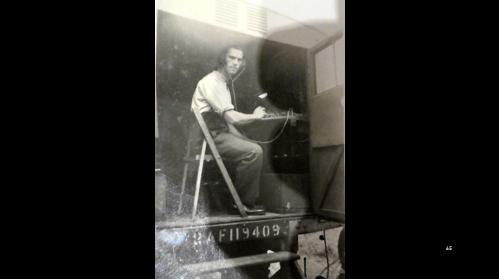
Visit to one of Alex Handyside’s sons.
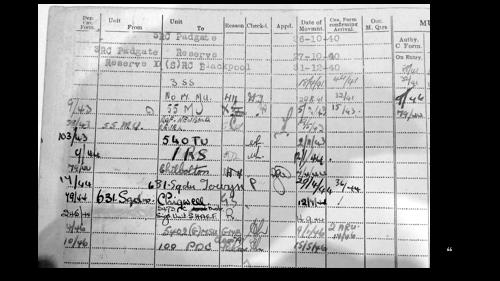
Wartime log book
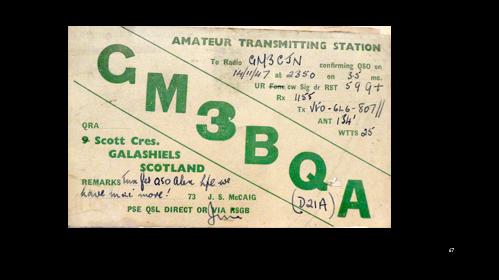
Jim McCaig GM3BQA was a Borders amateur at that time. He was a very keen DXer. Later he moved to Cockenzie in East Lothian and set up the Forth Motor Co. where he also manufactured and sold “GM3BQA Cubical Quad HF beams”.
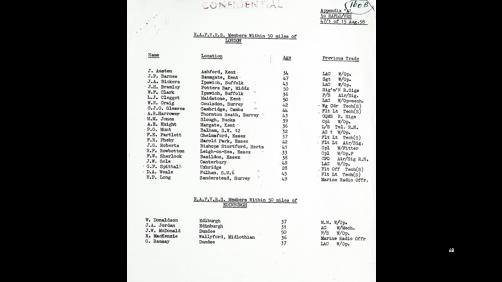
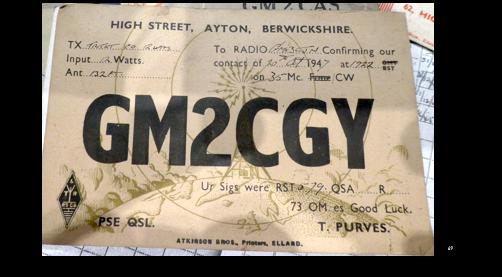
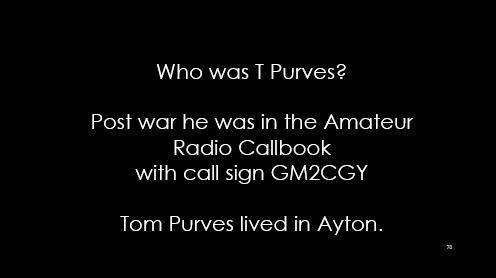

I contacted a classmate from Hawick High School who had been Head at Ayton Primary School.
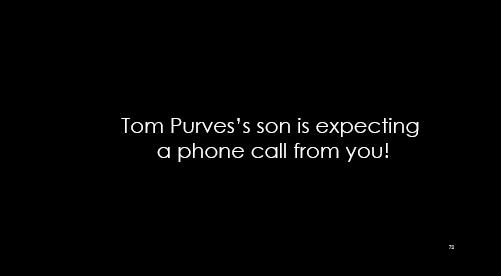
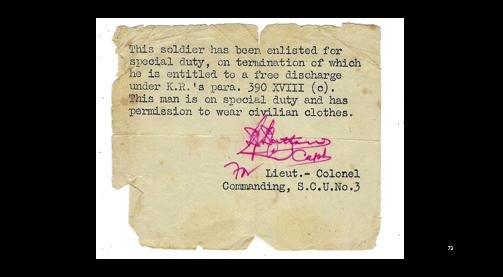
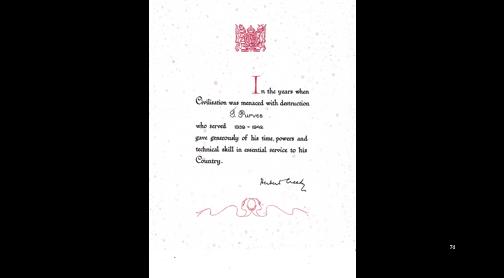
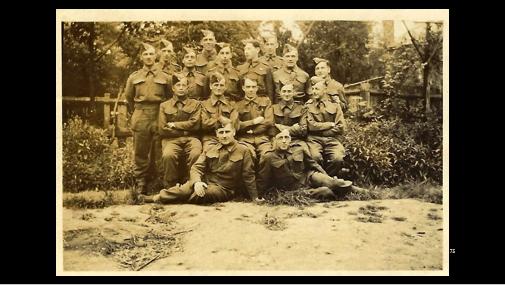
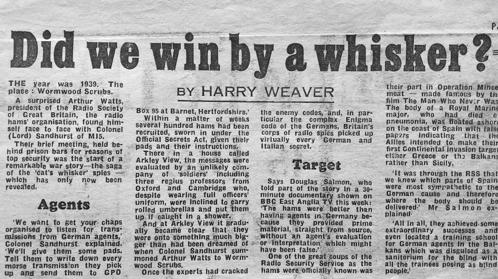
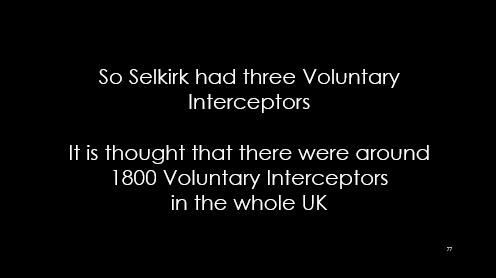
None of these VIs knew where their notes went. Many went to their grave without disclosing what they did during the war. It’s been an eye-opener for me to know that the Borders did have a connection with Bletchley Park.
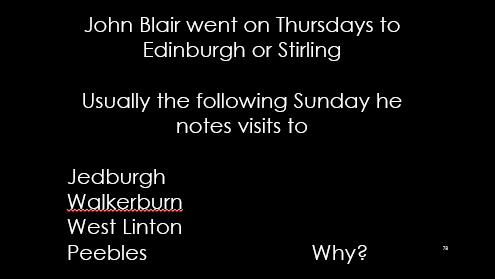
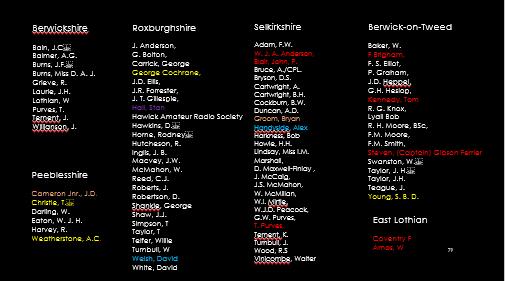
Around 80 names and places.

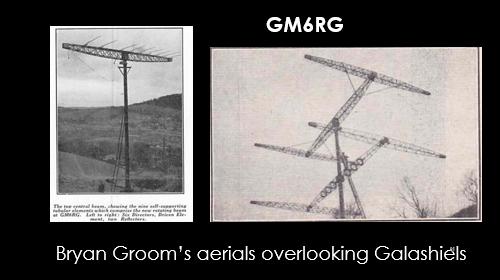
Note man standing in middle of huge beam!
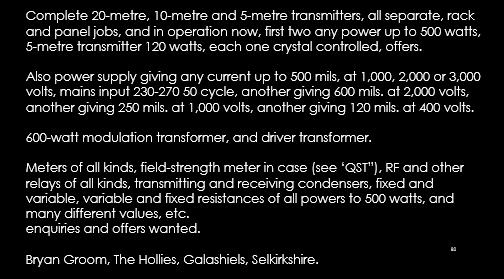
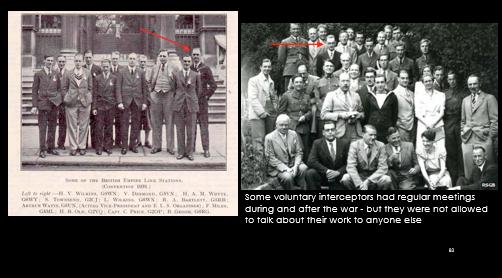
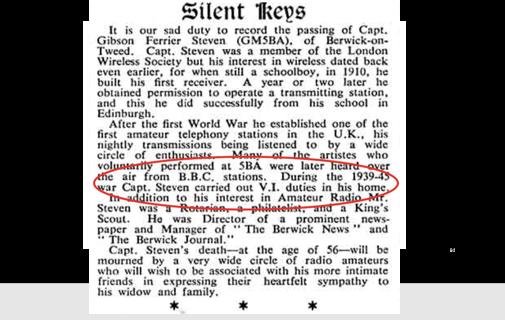
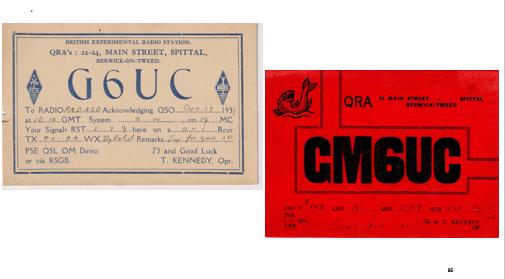
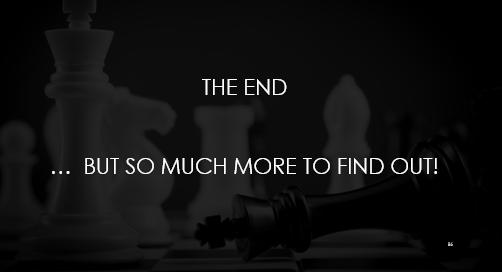
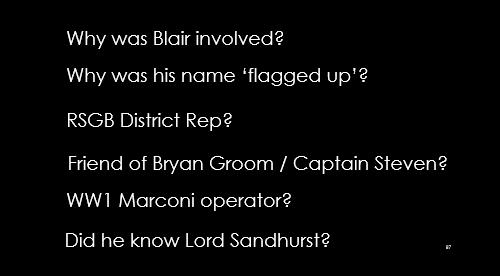
================================================================
Apologies for missing captions which were not available.
================================================================
